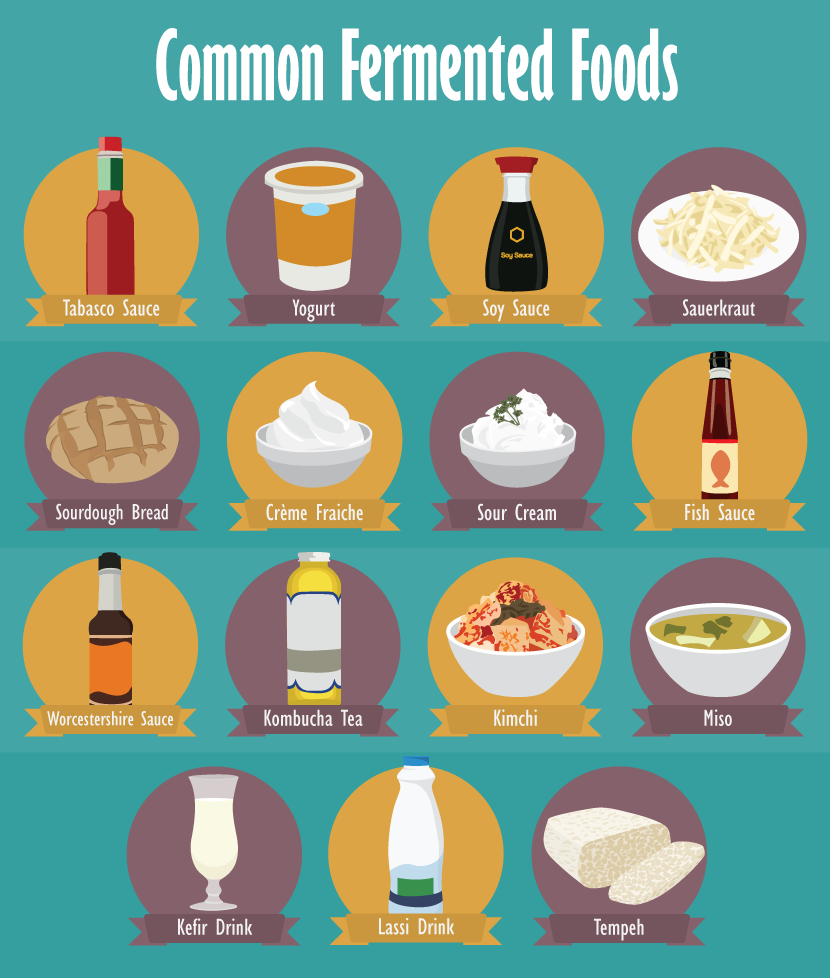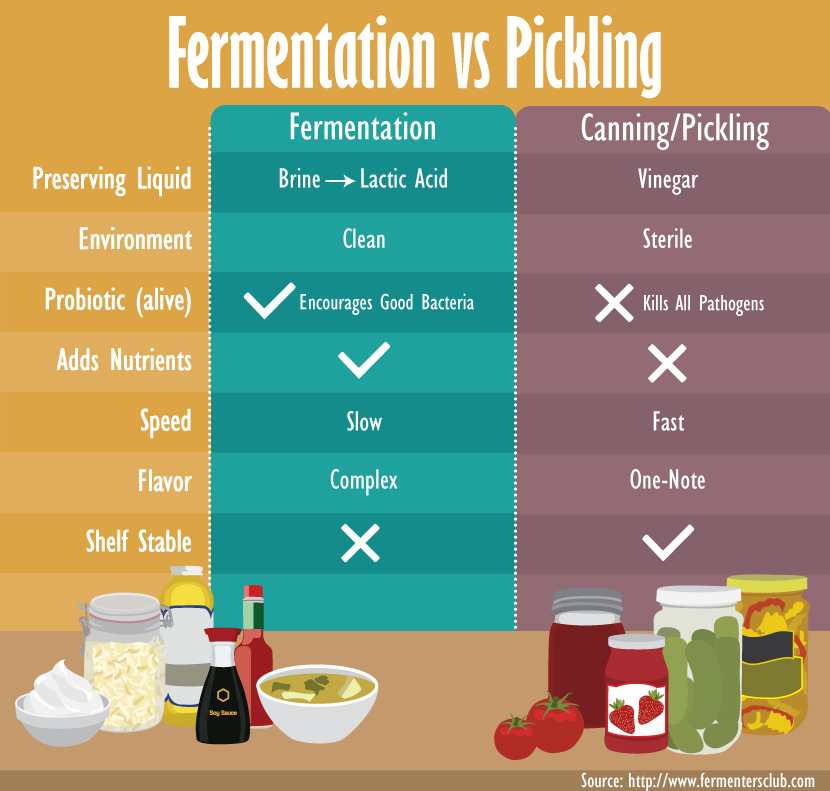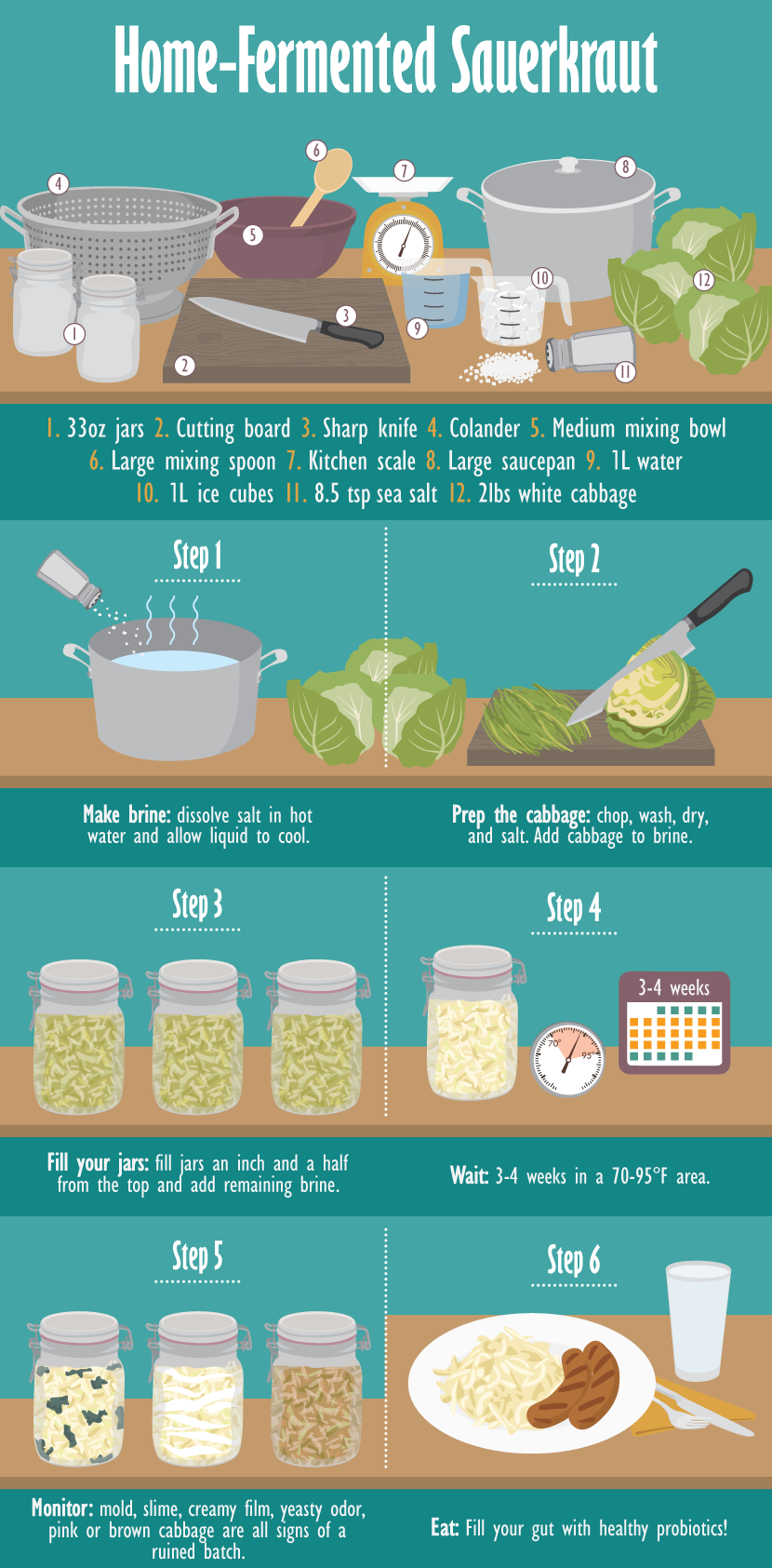Fermented Foods for a Healthy Gut
Learn All About Using Fermentation to Make Sauerkraut and More!
While you sit happily munching away at breakfast, lunch, and dinner,
day in and day out, an army of tiny, hard-working warriors are making
sure your gut stays healthy. Your microflora – that is, the bacteria,
fungi, viruses, and other microbes that comprise your busy internal
ecosystem – perform this careful balancing act throughout your lifetime.
Eating a healthy range of fermented foods can help you cheer on the
right team – the good bacteria – in your gut. Put aside for a second
the erroneous association of “fermented food” with spoiled, rotten,
or bad food, and you’ll discover that you’re probably already eating
foods that have been fermented. Not convinced?
Below is a list of commonly fermented foods:
 Once largely unknown, foods like kimchi and kombucha tea have experienced a
huge rise in popularity that coincides both with an increased interest in Asian
cuisine and the emergence of more health-conscious eaters in North America. And
if you’re looking for a fun fact to impress your friends at your next party, the
science of fermentation is called zymology.https://en.wikipedia.org/wiki/List_of_fermented_foods
Once largely unknown, foods like kimchi and kombucha tea have experienced a
huge rise in popularity that coincides both with an increased interest in Asian
cuisine and the emergence of more health-conscious eaters in North America. And
if you’re looking for a fun fact to impress your friends at your next party, the
science of fermentation is called zymology.https://en.wikipedia.org/wiki/List_of_fermented_foods
Health Benefits of Eating Fermented Foods
By supplementing and balancing the levels of good bacteria in our gut,
eating fermented foods can help improve digestion, boost immunity, and may
even help us stay lean.http://www.eatingwell.com/nutrition_health/nutrition_news_information/7_must_eat_fermented_foods_for_a_healthy_gut It has been shown that having a healthy gut also
affects our psychological and emotional well-being.http://articles.mercola.com/fermented-foods.aspx A healthy gut is one
of the biggest cornerstones of a healthy life overall.
DID YOU KNOW? Your gut produces more of the neurotransmitter serotonin,
which helps regulate your mood, than your brain does.
What’s the Difference Between Fermented and Pickled Foods?
Before you go clean out the grocery store of all its jars of pickles in
the name of health, there’s an important difference to be aware of between
pickled and fermented foods. Because not all pickled foods go through a
fermentation process, not all pickled foods offer the same health benefits
of fermented foods.
For example, jarred pickles that you find on a non-refrigerated shelf in the
condiments aisle are often made using vinegar without going through the process
of fermentation. This means that they don’t contain any of the probiotics that
make fermented foods so beneficial for your gut.

How to Make Home-Fermented Veggies
If you’ve never attempted home fermentation before, an easy vegetable to
start with is white cabbage to make sauerkraut. Once you’ve mastered the basics
of the exciting chemistry experiment that is home fermentation, you can start
experimenting with all kinds of vegetables and even start creating your own
yogurt and sour cream.
Fermenting your food at home is the best way to maximize the foods’ probiotic
cultures, which are often destroyed in large-scale, high-heat industrial processes
that create common store-bought items like the ubiquitous jarred pickle.
Home-fermented Sauerkraut
What you’ll need:
- 33oz (1L) Fido jars or pickling-specific jars like the Primal Pickler
- Fermentation weights such as Pickle Pebbles
- Cutting board
- Sharp knife
- Colander
- Medium mixing bowl
- Large mixing spoon
- Kitchen scale
- Large saucepan
- 1 L water
- 1 L ice cubes
- 6 tbsp + 2.5 tbsp pure sea salt
- 2 lbs white cabbage
Make sure that your jars, weights, and cutting and mixing equipment are
thoroughly cleaned before you begin. You don’t want to introduce any unwanted
bacteria before you start!
Preparation:
Make the Brine
Dissolve 6 tbsp salt in 1 L of water on the stove. Add 1 L ice cubes
to cool and transfer to a jar for storage.
Prepare the Cabbage
Choose a fresh, healthy-looking cabbage that is crisp,
not floppy. Remove the thick outer leaves and trim off any
excess hard stem. Dice the cabbage and rinse in your colander
under cold running water. Pat cabbage dry with clean paper
towel and weigh out 2 lbs. You’ll need about 2.5 tbsp salt
for 2 lbs cabbage. Transfer cabbage and sea salt to the mixing bowl,
layering the cabbage with the salt and mixing thoroughly for 2-3 minutes.
It’s important to mix the cabbage and salt together well to prevent bad
bacteria from developing where there’s a lack of salt.
Fill your Jars
Fill your jars with the cabbage mixture and press down firmly to
pack the cabbage down into the jars. Fill the jars to about an
inch and a half from the top, and then pour your brine over
the cabbage to fully cover it, leaving about ¾ of an inch at
the top for gases to escape (this is particularly important if
you’re using Fido jars without an airlock). Place your fermentation
weight, such as Pickle Pebbles, on top of the cabbage to prevent any
pieces from floating to the top. Make sure that all the cabbage stays
fully submerged in the brine. Seal the lids of your jars.
Wait
To make the most of the healthy probiotics in fermented foods,
you’ll want to leave your jars out (don’t refrigerate them) for 3-4
weeks at between 20 and 35?C (approx. 70-95F).
Monitor
Make sure to keep an eye on your fermentation lab as it progresses.
While the appearance of a white film on top and some white sediment at
the bottom can be fine, there are some warning signs to watch for that
may indicate that your ferment has taken a wrong turn: mold, slime,
creamy film, a yeasty odor, or pink or brown cabbage. These signs
indicate that your cabbage is likely unsafe to eat. Back to the
drawing board. Practice makes perfect!
Eat
If things are on track, 3-4 weeks later, your cabbage is ready to eat.
It will be packed with healthy probiotics for a balanced gut.
For more information on the science of fermentation and detailed instructions
on how to perfect your sauerkraut, check out Nourishing Treasures.

Practice Makes Perfect
Although home fermenting can seem overwhelming at first, practice makes perfect.
Once you’ve mastered the basic process, you can start experimenting with a wide range
of vegetables, and it is absolutely worth the effort. Ensuring that you’ve got a
healthy gut will have a positive ripple effect for your overall health, right up
to your psychological and emotional well-being.
Embed the article on your site

